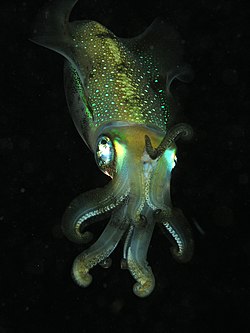| Loliginidae Temporal range: | |
|---|---|
 | |
| European squid (Loligo vulgaris) | |
| Scientific classification | |
| Domain: | Eukaryota |
| Kingdom: | Animalia |
| Phylum: | Mollusca |
| Class: | Cephalopoda |
| Order: | Myopsida |
| Family: | Loliginidae Lesueur, 1821 |
| Genera | |
See text | |
| Synonyms [2] | |
| |
Loliginidae, commonly known as pencil squids, is an aquatic family of squid classified in the order Myopsida.




